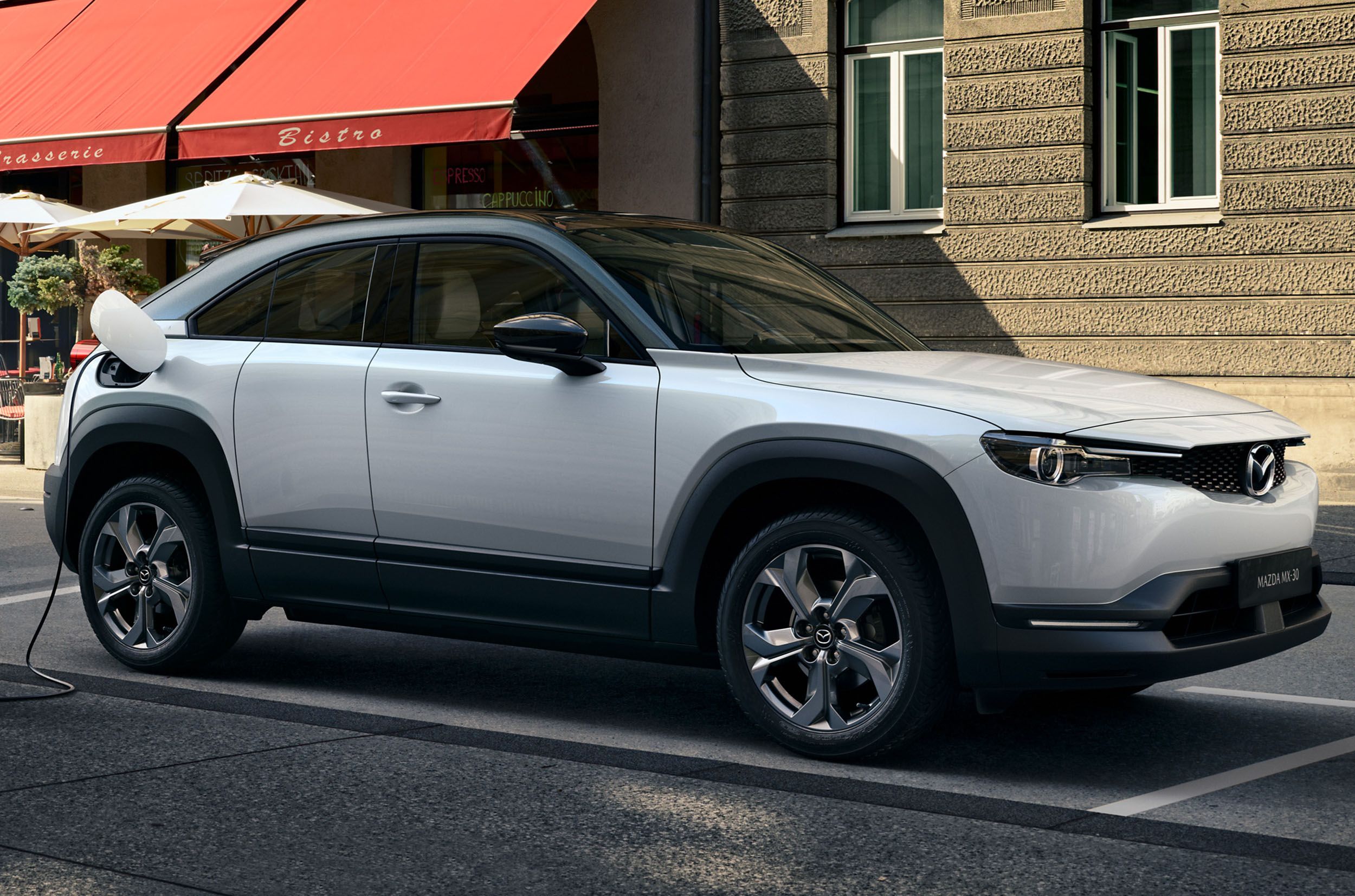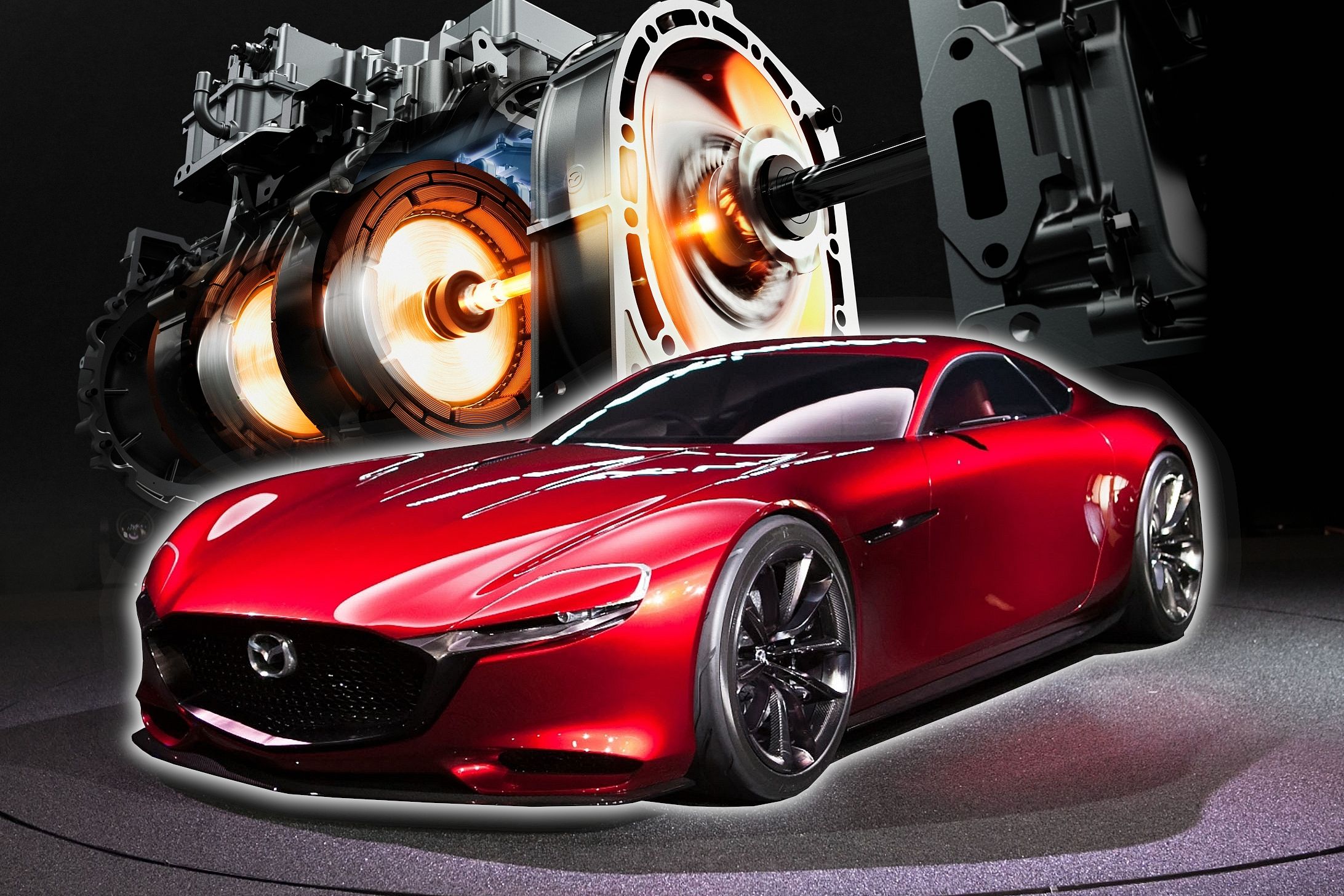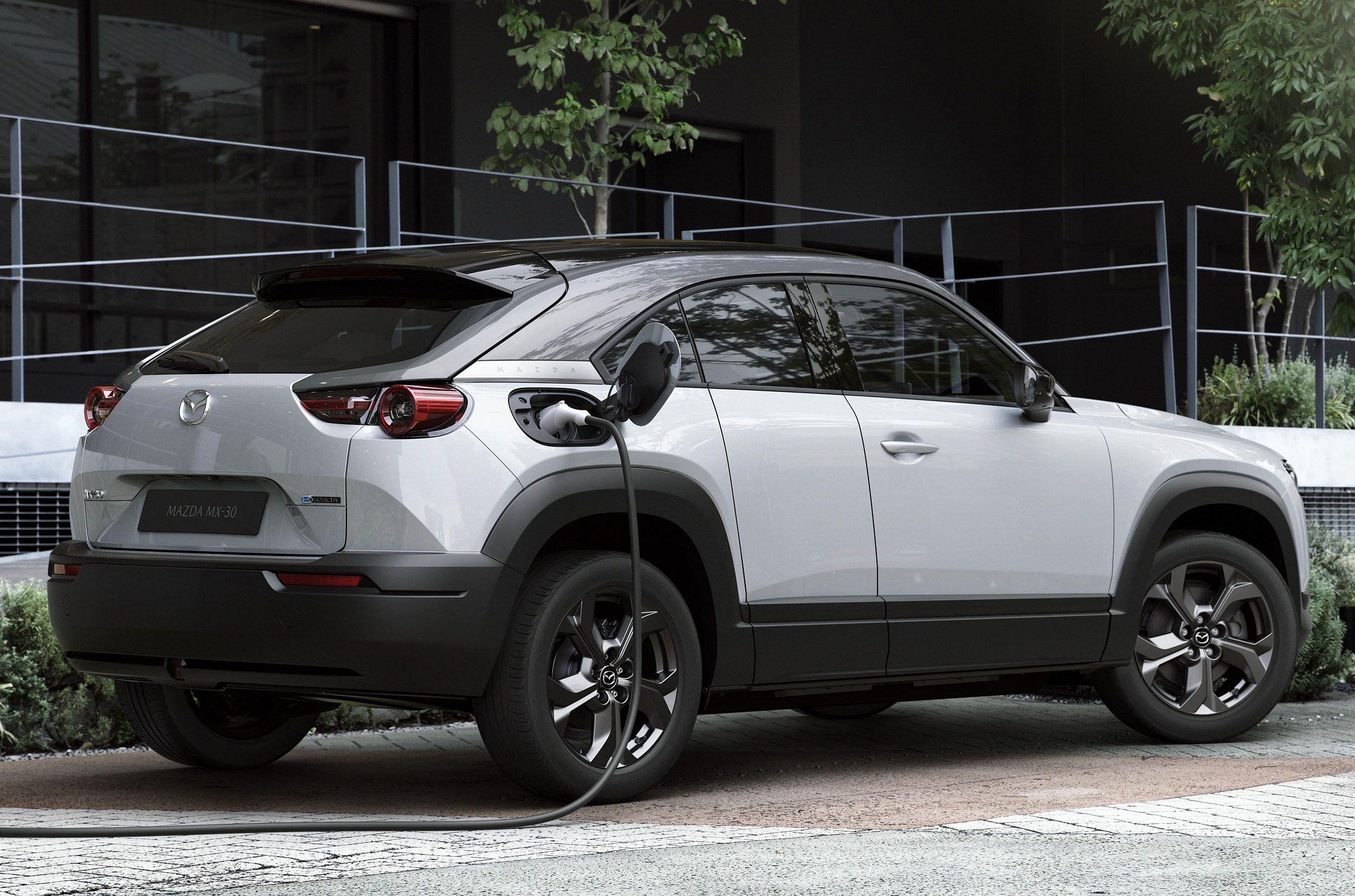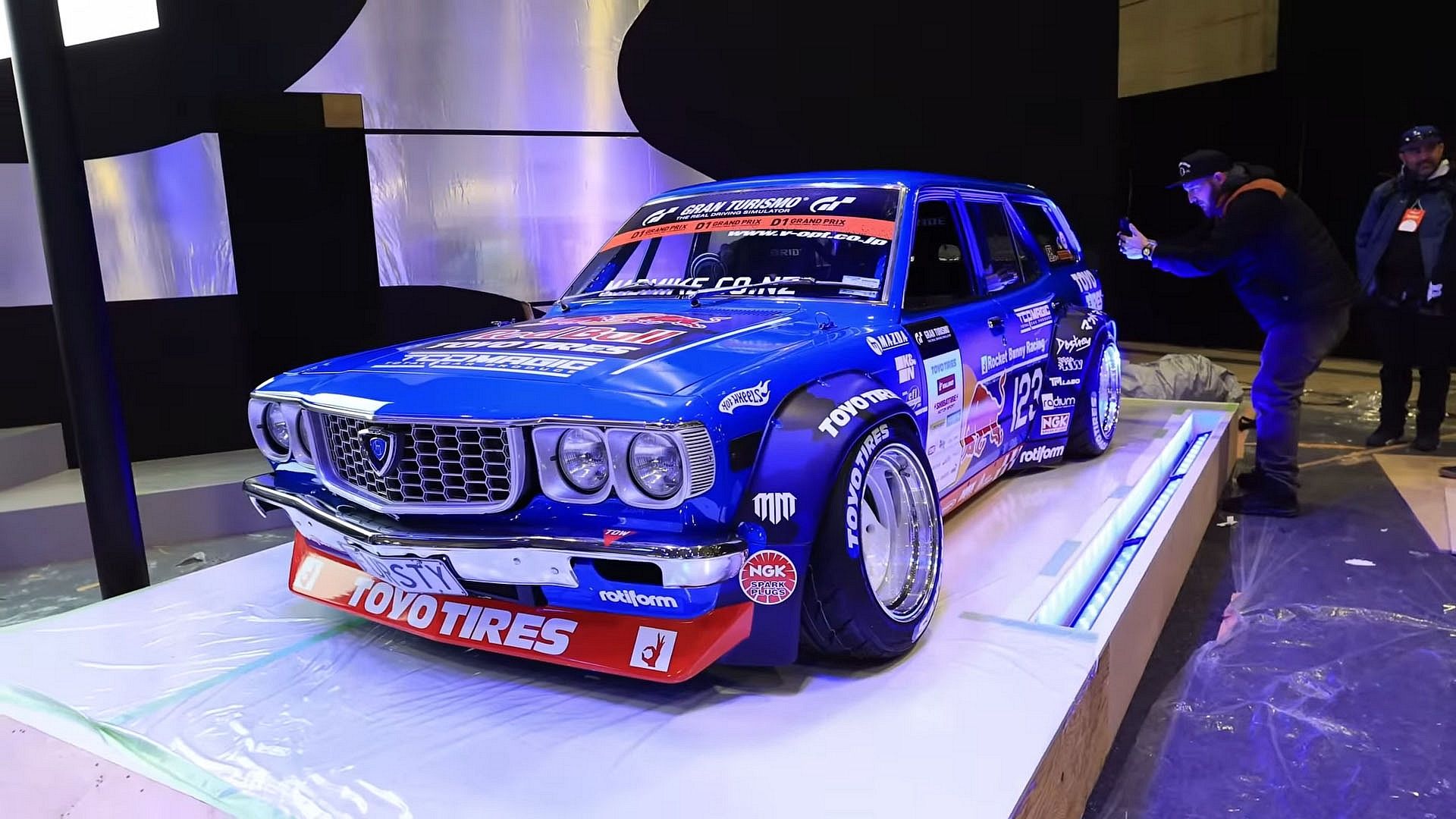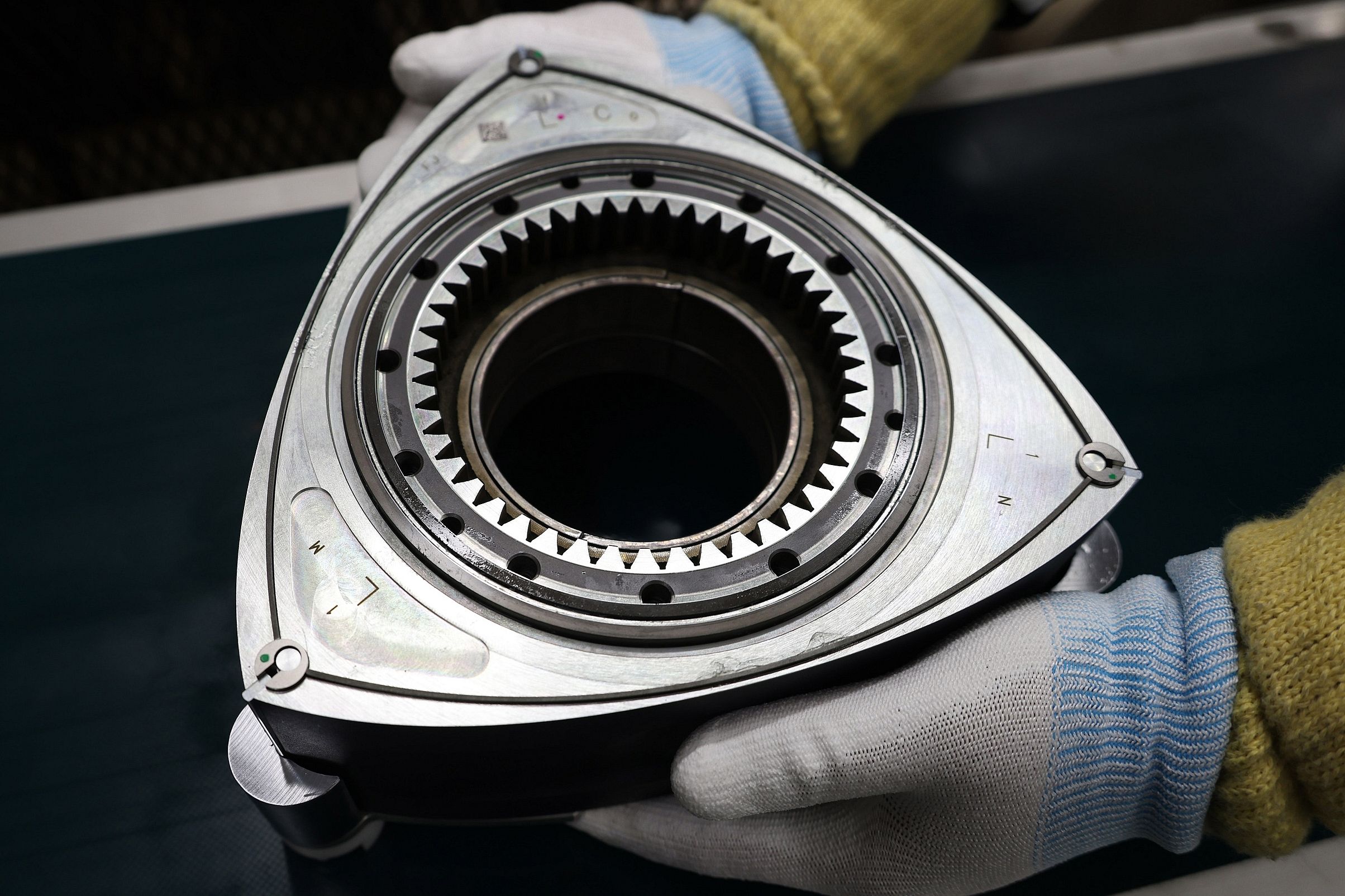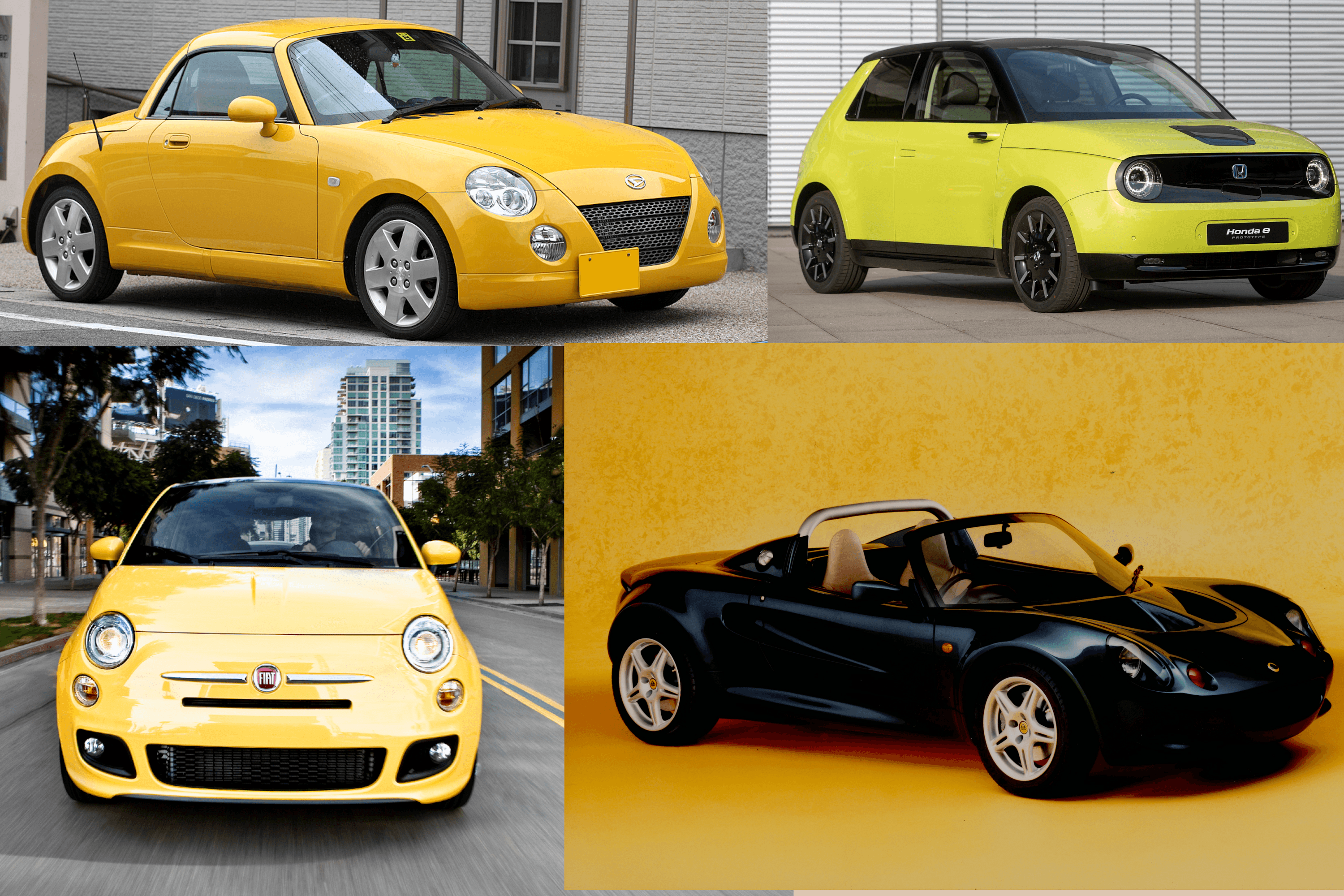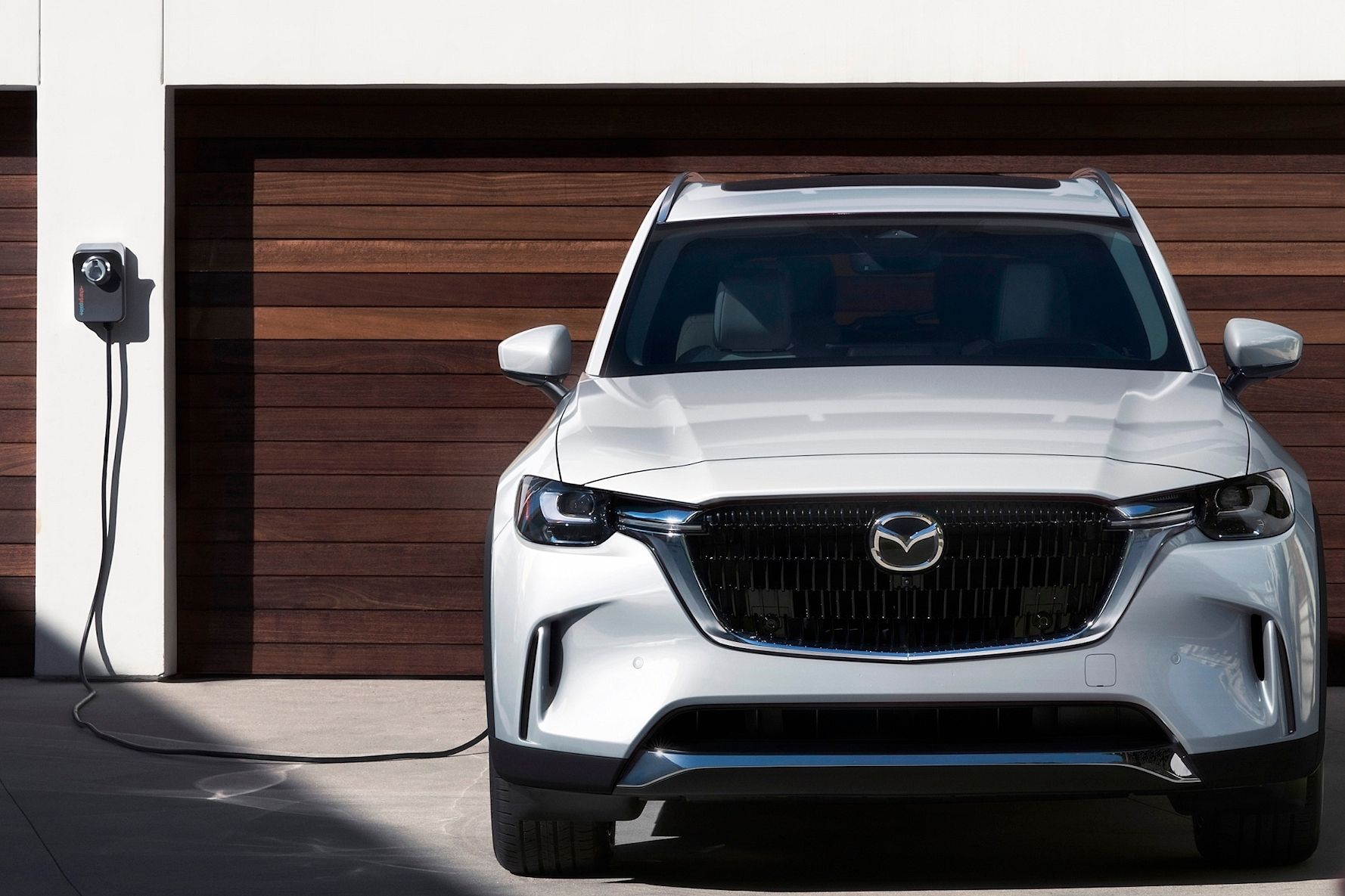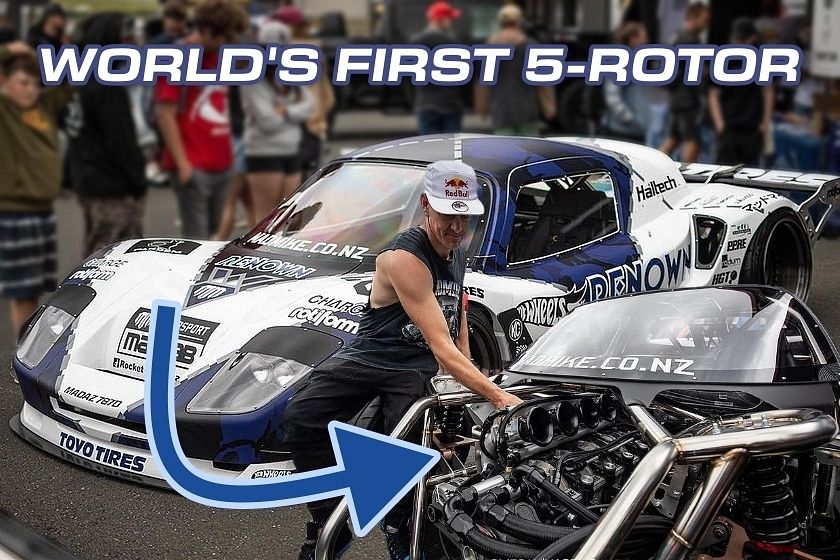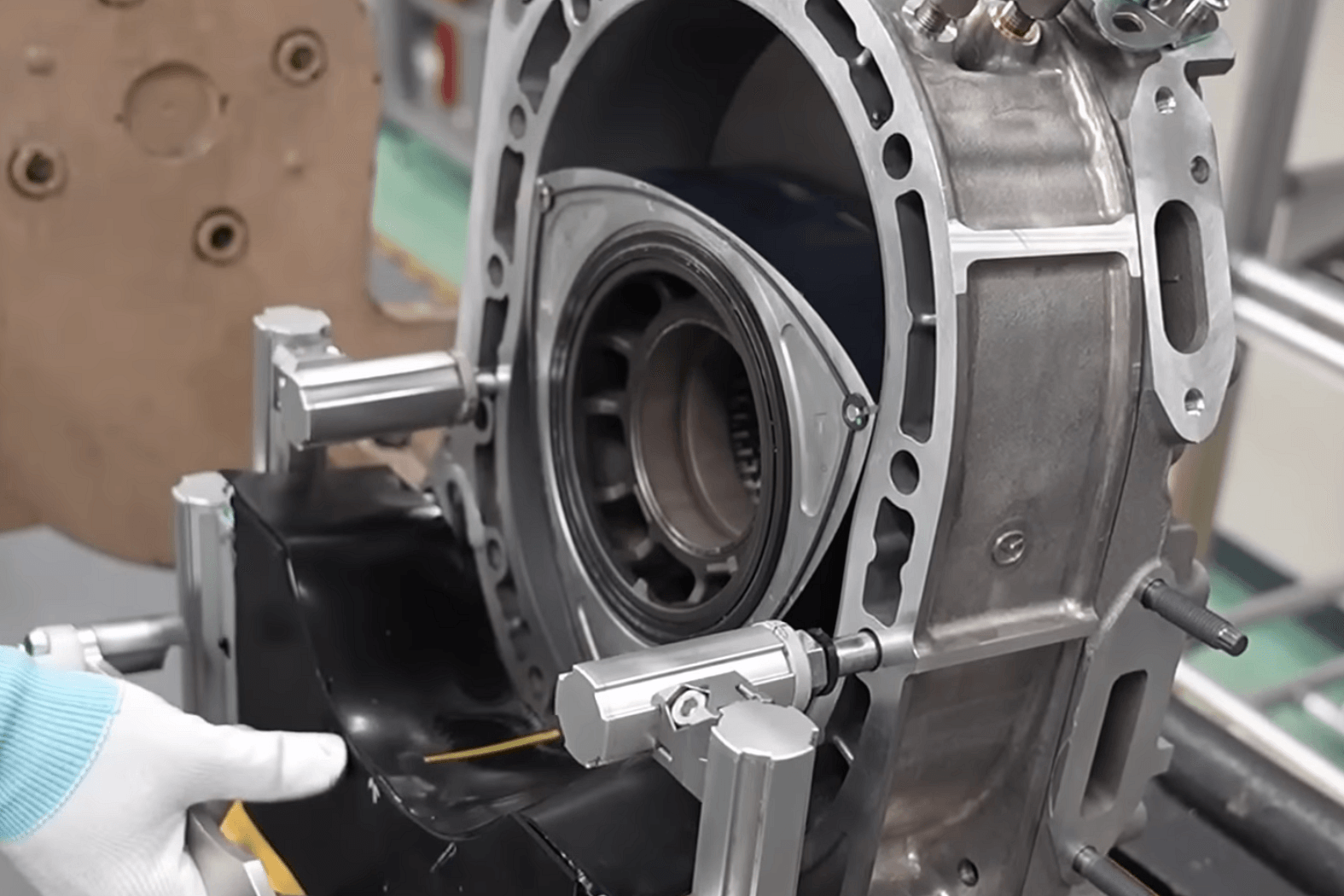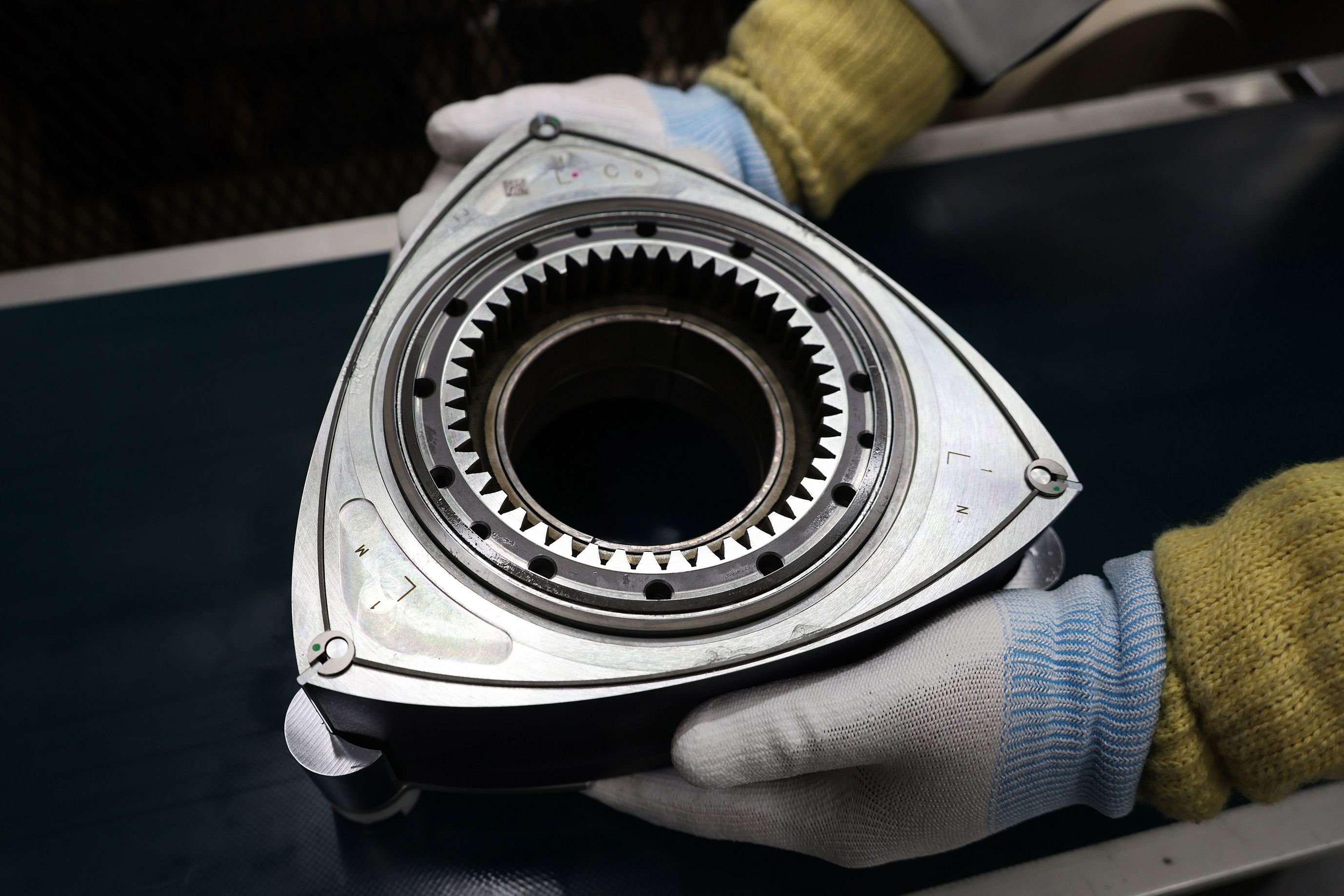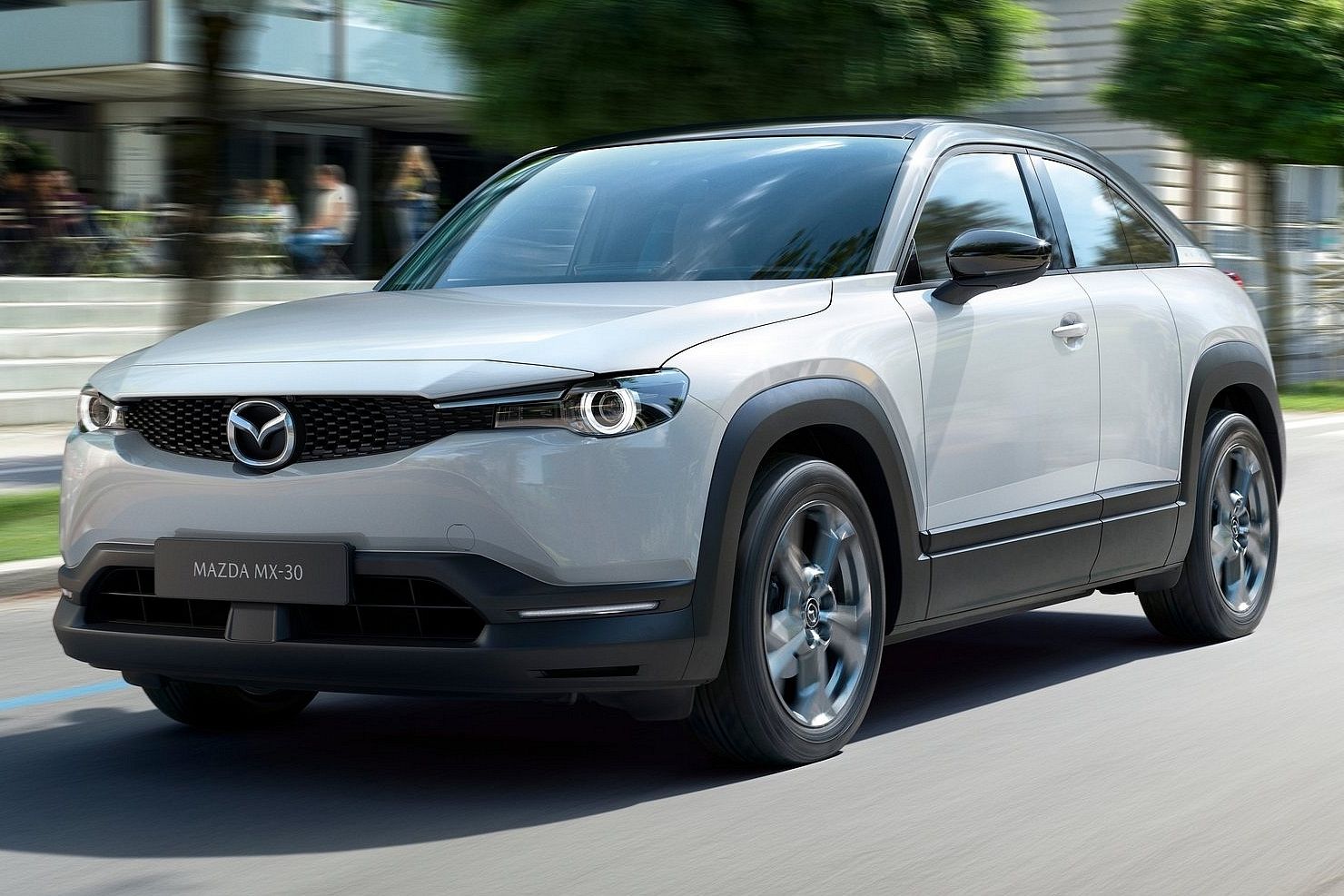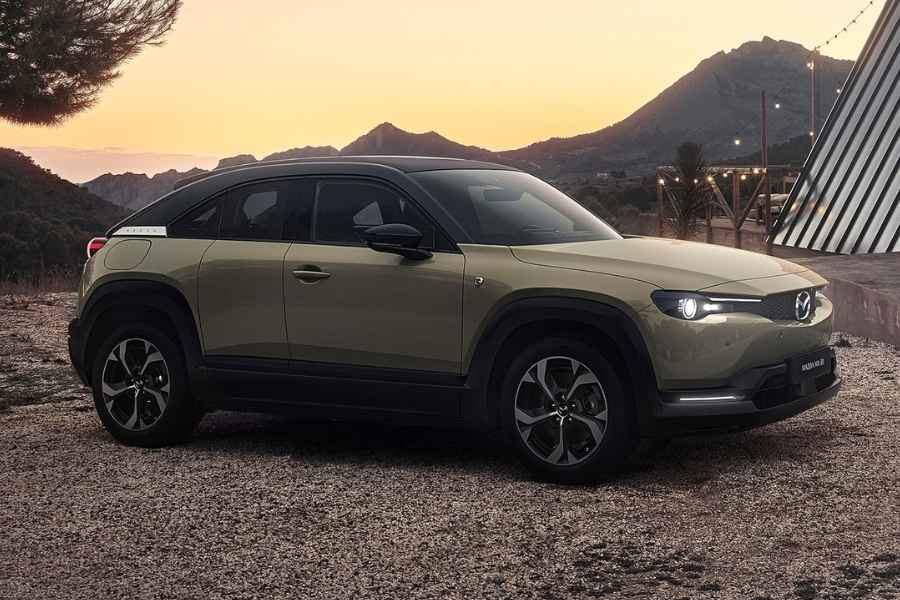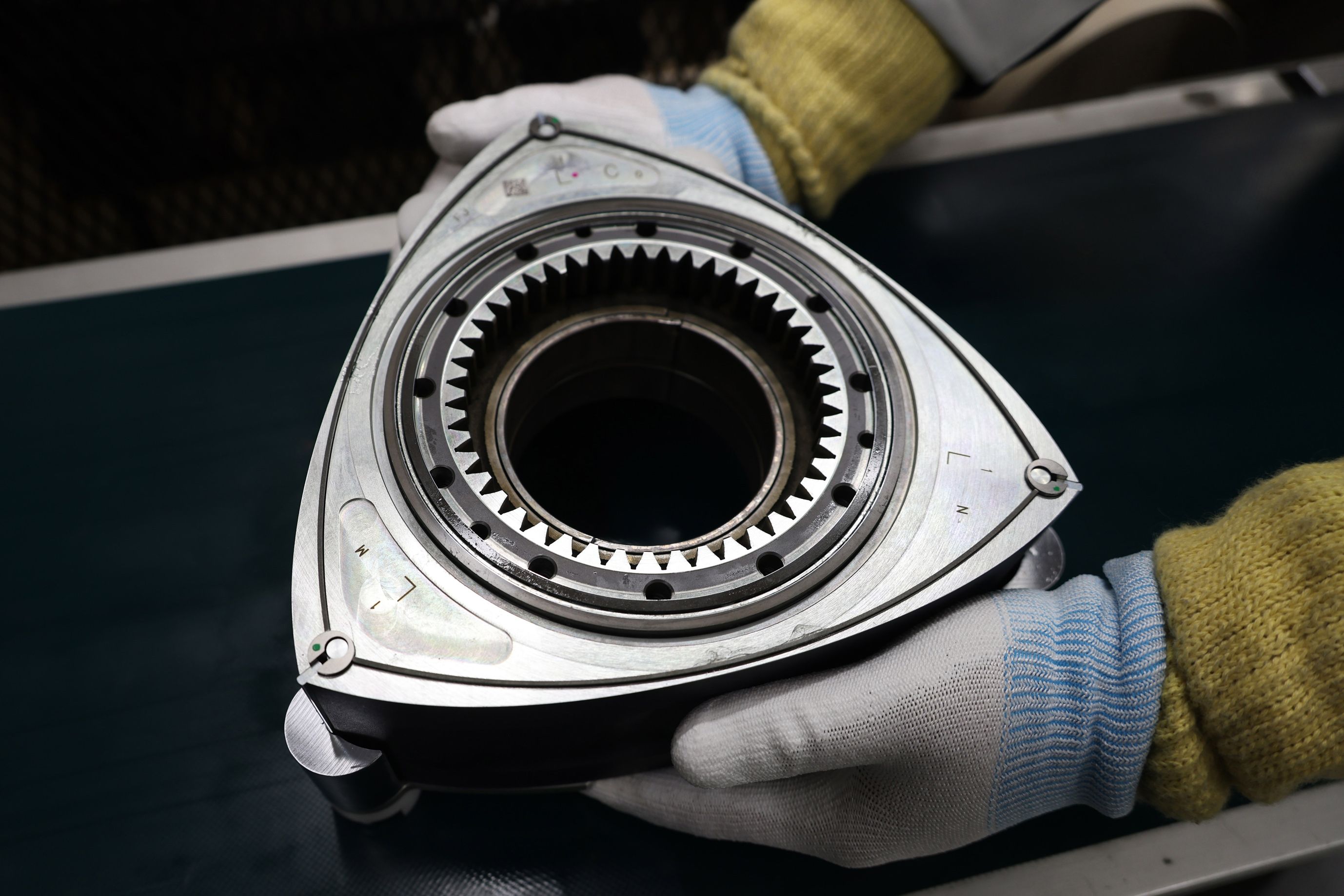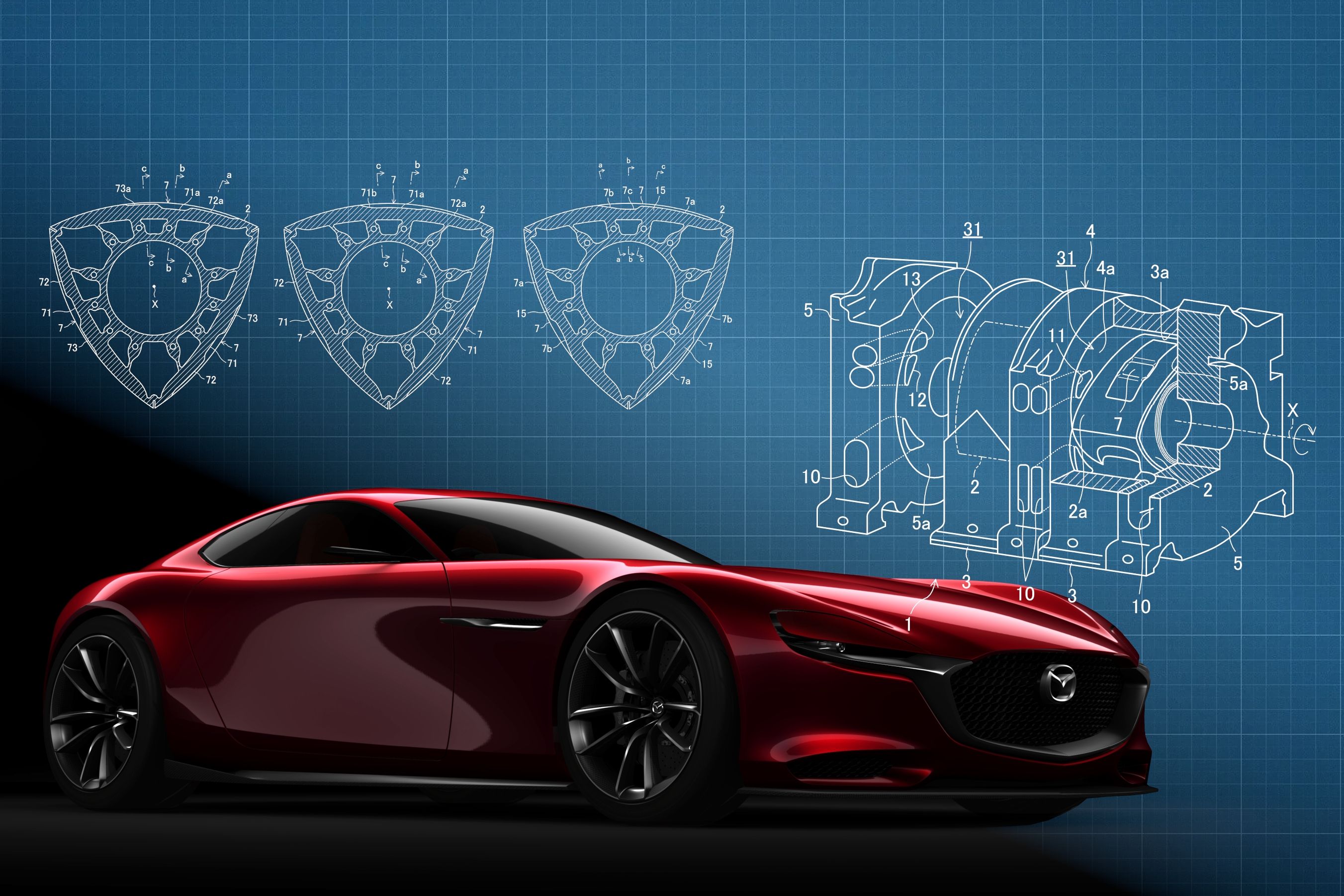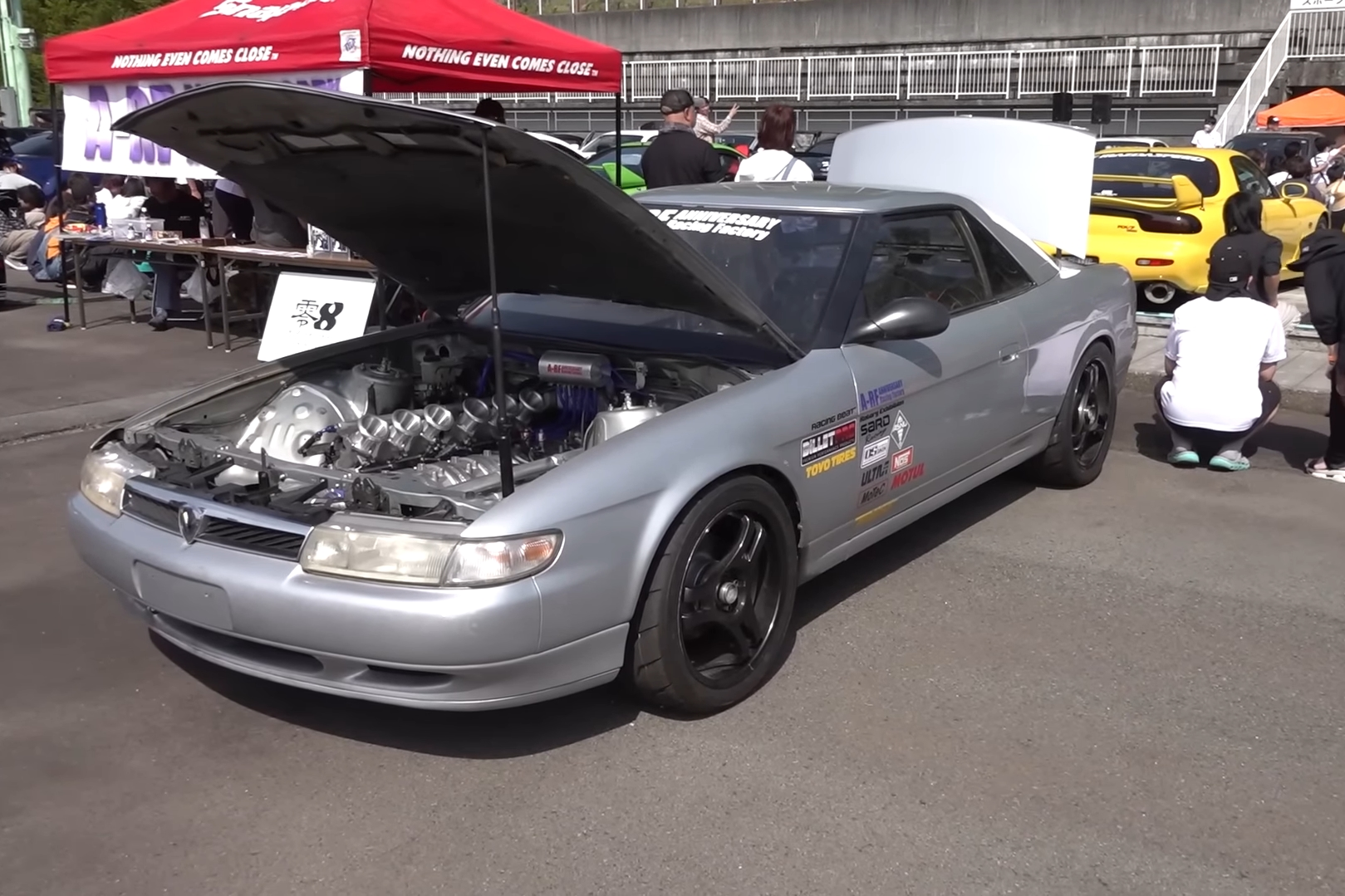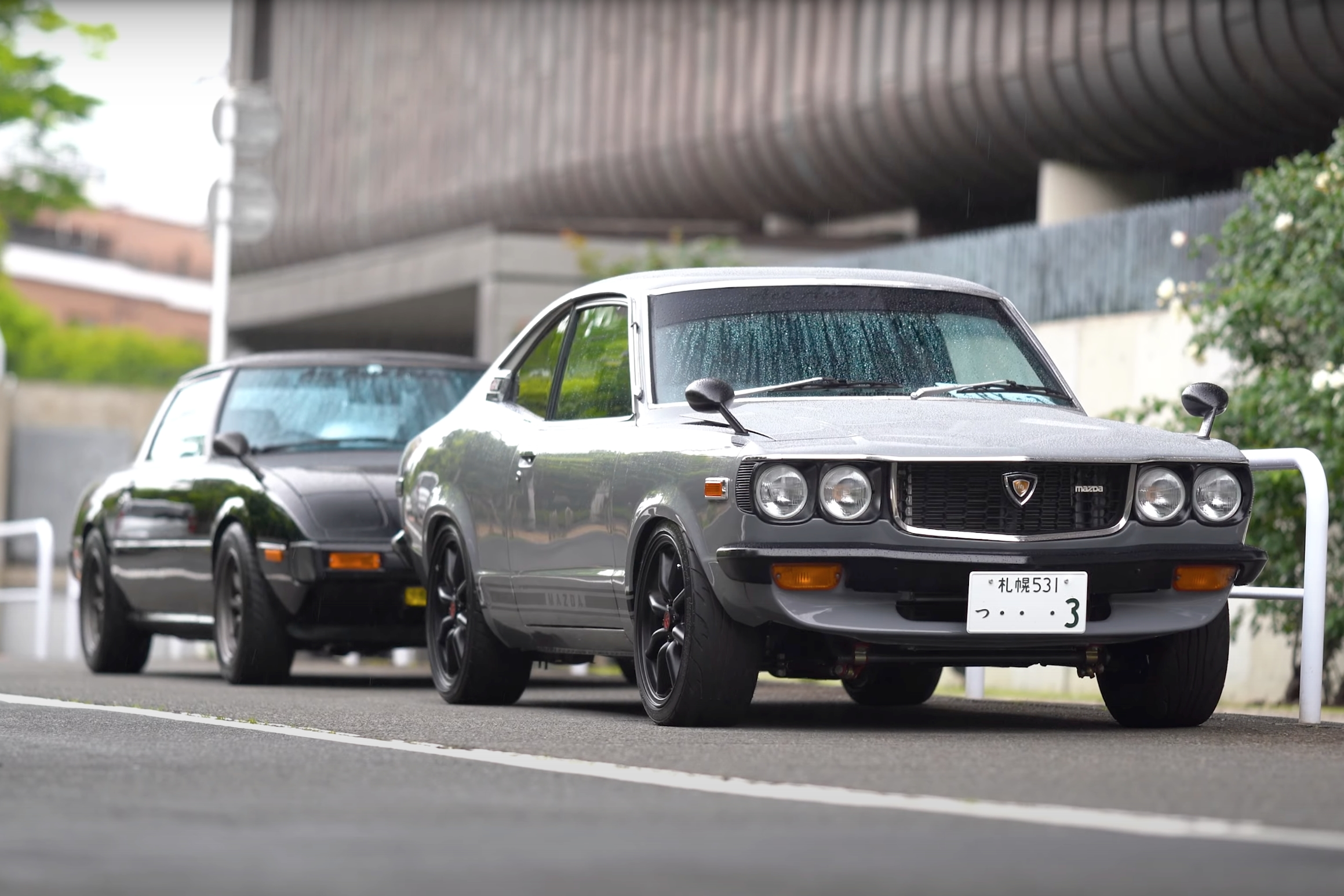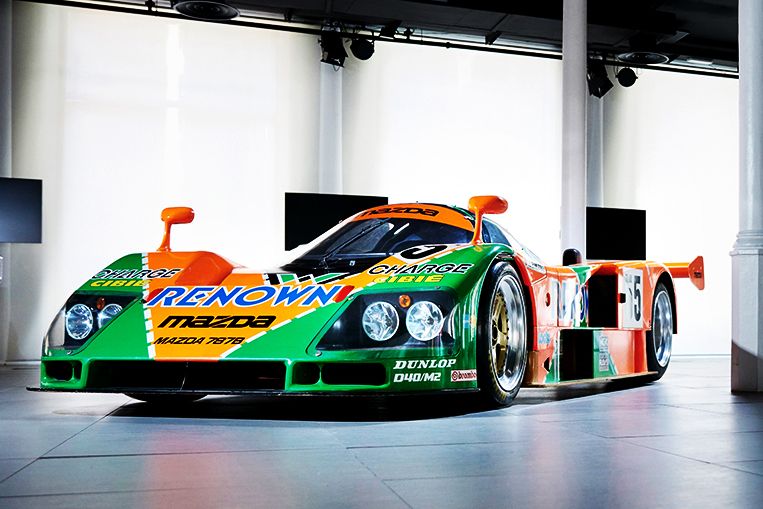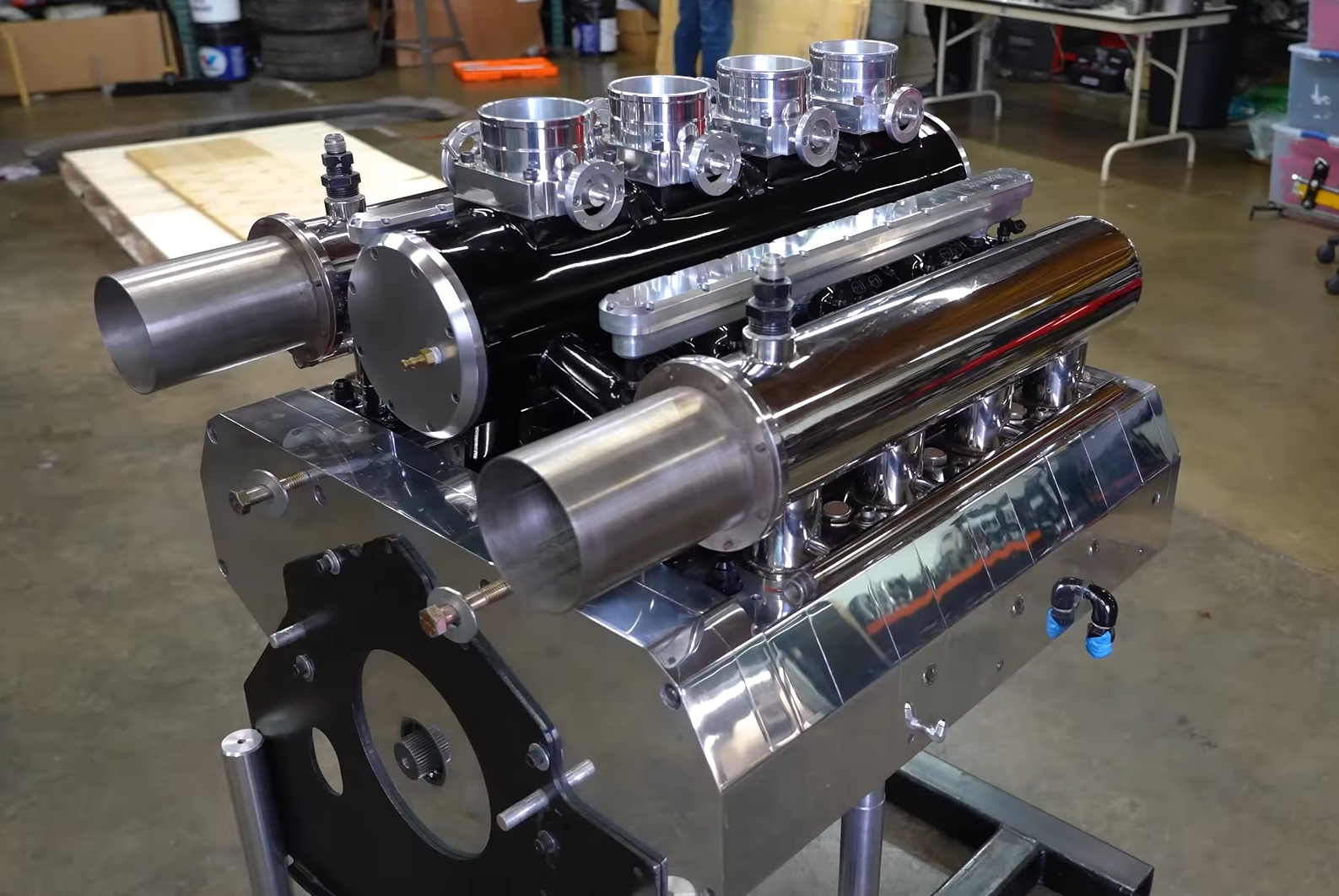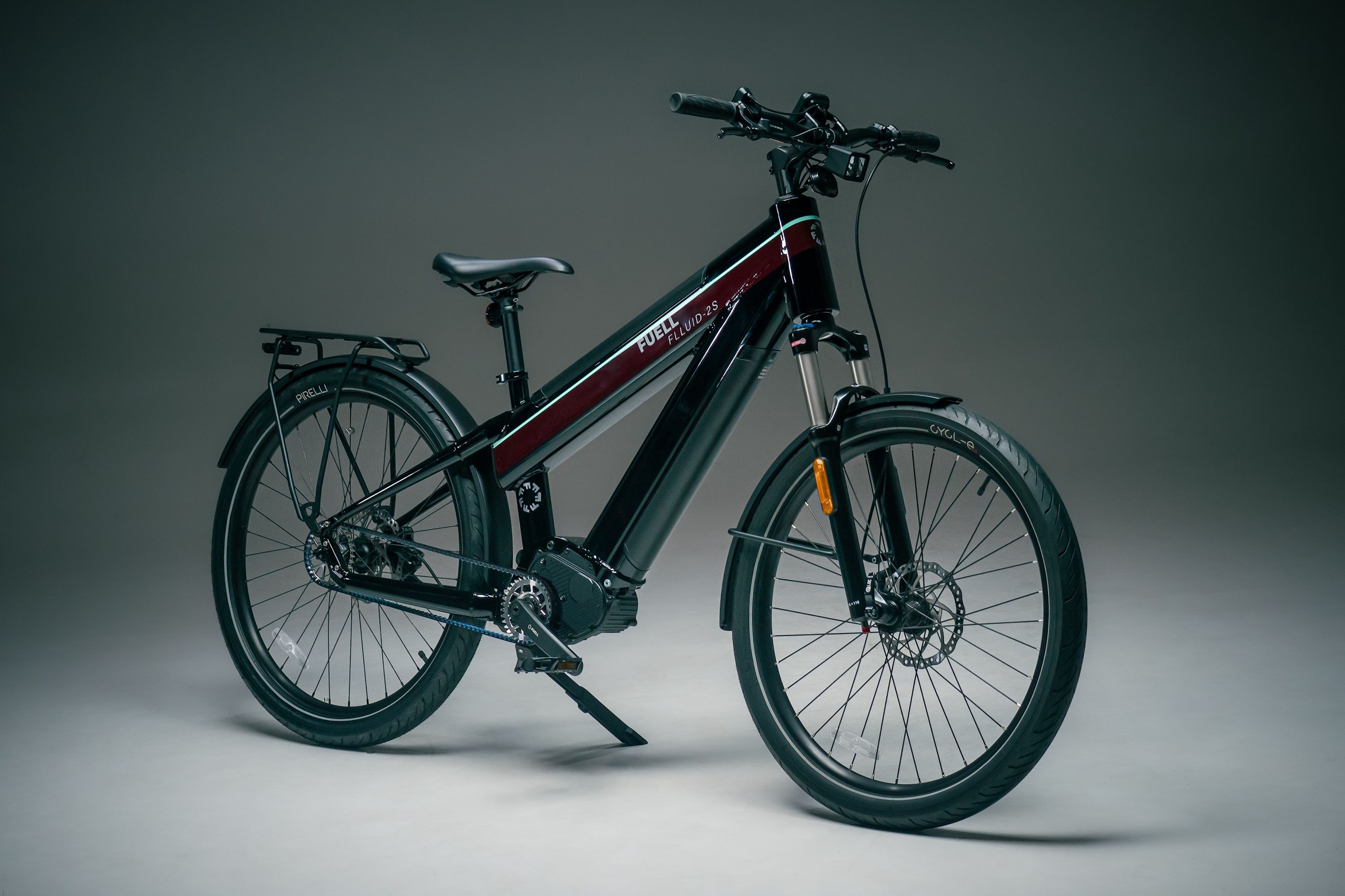2023 Mazda MX-30 EV Review: Off-The-Wall EV Goes Off The Market
With its sub-$34k price, the new Mazda MX-30 electric crossover - launched in the USA only last year - looked promising at first glance. Here we have a subcompact electric crossover priced right alongside the Hyundai Kona Electric and Chevrolet Bolt EUV, but with the sharp looks and engaging driving dynamics we expect from Mazda, and rear-opening "Freestyle doors" to add an element of intrigue. With its electric motor delivering only 143 horsepower, this was to be no performance EV, but more disappointing was the tiny 35.5-kWh battery delivering a range so short - 100 claimed EPA miles - that we had to double-check that it wasn't a misprint when first reading the press figures. A range closer to 200 miles is the bare minimum, and only boutique EV hatches, such as the Mini Cooper SE, do less - and even that beats the Mazda. The MX-30 is only sold in California, and after combined sales of just 505 in 2021 and 2022, it's being killed off before the planned rotary-powered range-entender version could even make landfall here. Is there any reason at all to grab one while it's still available?
New for 2023
For its second - and last - year on the market, the 2023 MX-30 remains completely unchanged except for a small price hike. There are still only two trims in the range - Base and Premium Plus - and all their features and specifications remain the same. The base price of the 2023 Mazda MX-30 creeps up by $640 to just over $34k.
2023 Mazda MX-30 EV Price: Which One to Buy
The price of the 2023 Mazda MX-30 in Base trim starts at $34,110. There is only one other trim called Premium Plus, and that will cost you $37,120. These prices are MSRP and don't include Mazda's $1,375 destination charge ($1,420 for Alaska).
Priced among far more powerful EVs with more than double the range, the best way to go with an MX-30 is to pay as little as possible. So, if you live in California and you must have an MX-30, the Base is perfectly good, as it already comes with 18-inch wheels, a sunroof, a digital gauge cluster, a head-up display, heated front seats, and most of the important driver aids, such as adaptive cruise control and blind-spot/lane-sensing systems. The Premium Plus adds a premium audio system and more driver aids but also costs $3k more, pushing the price too close to $40k for comfort.
| Base | Premium Plus |
|---|---|
| Sweet Spot | Safest |
| $ 34110 | $ 37120 |
| Single electric motor (143 hp/200 lb-ft), single-speed automatic, FWD | Equipped with the Base’s features, plus: |
| 18” alloys, automatic LED headlights, power sunroof | Advanced keyless entry |
| 8-way power driver’s seat, leatherette/cloth upholstery, heated front seats | Heated steering wheel |
| 8.8” touchscreen, phone integration, head-up display, 10-speaker audio | 12-speaker Bose audio system |
| Adaptive cruise control, forward & reverse braking, lane & blind-spot sensing | Surround-view monitor, all-round parking sensors |
| Blind-spot assist, front cross-traffic alert |
Interior and Features
The interior is very stylish and upscale and makes extensive use of sustainable and recycled materials. Standard equipment is comprehensive, obviating the need to opt for the Premium Plus.
The interior of the MX-30 is a delightful space to spend time, much the same as most modern Mazdas. The dashboard's horizontal styling theme is complemented by sustainable and recycled materials, with cork in places such as the center console and door handles, and seat fabrics partly made from recycled plastic bottles. Other highlights include a floating center console, attractive two-tone color schemes, and tastefully integrated tech, which includes a digital gauge cluster and dashtop touchscreen. There isn't as much space inside the MX-30 as in rivals, though, especially in the second row, and those suicide rear doors seem like more of a gimmick than a boon in practice. The high rear deck and tapering glasshouse restricts rearward vision a little, but the backup camera and standard rear parking sensors help you out.
Space
Interior space is not a strong point, especially in the second row, where the decent headroom is of doubtful value, considering adults seated there won't have anywhere to put their legs. The seat is flat and featureless, providing little lateral support for occupants, but making it easier to squeeze in an occasional (small) fifth passenger. The rear door frame is small due to the truncated suicide door, but the absence of a B-pillar and the easy step-in height provided by the crossover-like ground clearance partially make up for it. It would be easier still to get in via traditional front-opening rear doors, but then the MX-30 would lose one of its party tricks lent from the erstwhile RX-8 sports car. A matter of form over function, then. No such complaints up front, where full-size adults have enough room to get comfortable on supportive seats that are also heated. The driver's seat has eight-way power adjustment and two memory settings.
Cargo
With both rows in use, trunk space benefits a little from the cramped rear seat, and the 21 cu-ft available behind the second row beats its Chevy and Hyundai rivals. With the 60/40-split rear seats folded flat, up to 41.3 cu-ft of trunk volume is available, which is substantially less than the competition, though; the Bolt EUV offers nearly 57 cu-ft. At least the rear seats fold almost completely flat, unlike in some hatchback rivals such as the Nissan Leaf. Unfortunately, there is no frunk in the nose to stow things.
Oddments space in the cabin is generous. There is a roomy storage bin below the floating center console and an under-elbow storage bin. The front cupholders behind the raised shift-lever platform have nifty flip-down covers, providing a flat and grippy, cork-lined surface to put something like your mobile phone when you don't need the cupholders. There is a glovebox, four door bins (even the short rear doors have small bins), one passenger seatback pocket, and rear cupholders in the fold-down armrest.
| Mazda MX-30 EV | Hyundai Kona Electric | Chevrolet Bolt EUV | |
|---|---|---|---|
| Seating | 5 Sseater | 5 Seater | 5 Seater |
| Headroom | 38.5 in. front 37 in. rear | 39.6 in. front 37.7 in. rear | 40 in. front 37.8 in. rear |
| Legroom | 41.6 in. front 30.1 in. rear | 41.5 in. front 33.4 in. rear | 44.3 in. front 39.1 in. rear |
| Trunk space | 21 - 41.3 ft³ | 19.2 - 45.8 ft³ | 16.3 - 56.9 ft³ |
Materials and Colors
You don't get a choice of interior colors for the Base trim; its seats are covered in cloth and leatherette, and only a two-tone Gray/Pure White interior color scheme is available. The Premium Plus adds an attractive two-tone black/Vintage Brown option. Sustainable and recycled materials are featured throughout the interior, with the seat cloth woven from 20% recycled threads. Sustainable cork trim is used in several places, and the steering wheel is trimmed in real leather.
Features and Infotainment
Even the Base trim gets a comprehensive list of features, kicking off with heated front seats, cloth/leatherette upholstery, an eight-way power driver's seat with two memory settings, a power sunroof, a leather-trimmed steering wheel that also manually tilts and telescopes, and single-zone automatic climate control. The Premium Plus also gets advanced keyless entry and a heated steering wheel. If you want extra equipment, you can't add options to the Base - you must opt for the Premium Plus trim, which Mazda essentially treats as a package added to the Base trim.
The driver is faced by a seven-inch digital gauge cluster, and over to the right is an 8.8-inch touchscreen mounted high up on the dashboard. The infotainment system features Apple CarPlay, Android Auto, Bluetooth, in-car apps, SiriusXM capability, and an eight-speaker audio system. On the Premium Plus, you get a three-month SiriusXM trial subscription and a 12-speaker Bose audio system.
| Base | Premium Plus | |
|---|---|---|
| Heated front seats | S | S |
| Heated steering wheel | N/A | S |
| Power sunroof | S | S |
| 7" and 8.8" dual displays | S | S |
| 12-speaker Bose audio system | N/A | S |
Performance
With only 143 hp, the MX-30 is well behind the class leaders in terms of performance, but disappointingly, it doesn't make up for it with good efficiency or range.
The Mazda MX-30's electric motor develops only 143 hp and 200 lb-ft of torque, so performance is expectedly sedate in view of the 3,600-lbs-odd mass it has to lug around. Similarly priced rivals are far more powerful. The only drivetrain configuration is front-wheel drive, and the Mazda lacks an all-wheel-drive option that competitors such as the VW ID.4 offer. Top speed is limited to just 91 mph, underscoring the MX-30's city focus. Trailering is out of the question, as no factory tow hitch is available for the car, and it lacks a rated towing capacity in the US.
While the Mazda MX-30's 0-60 sprint of around 8.5 seconds is good enough to make it feel fairly nippy in traffic, it pales compared to the Bolt EUV and Kona Electric, which both have at least 200 hp and get to 60 mph nearly two seconds sooner. The MX-30 is out of its depth on the highway, where the lack of power is compounded by severe range anxiety should you dare leave the confines of the city. For these reasons, it's an about-town car only. You get adjustable regenerative braking, but there isn't enough retardation for one-pedal driving. Some of these negatives are deal-breakers, and that's a shame because the MX-30 is otherwise very good to drive. Thanks to the small battery set low within the wheelbase, there isn't too much weight to hinder agility, and what there is serves to lower the center of gravity. The Mazda feels light-footed and planted, turning in with alacrity thanks to responsive steering and Mazda's G-Vectoring Control Plus system. It feels even more composed than the excellent CX-30 it's based on.
Battery, Charging, And Range
The Mazda MX-30's MPGe figures are poor, despite its relatively low weight, and the EPA's combined 92 MPGe trails the competition by 23-28 MPGe. This is disappointing, as the compromises demanded in terms of power output and performance are not compensated for at all in improved efficiency. The result is a paltry range of just 100 miles - which dwindles to 70 miles or less on the highway at cruising speeds. Its typical rivals go about 150 farther on a charge. The small 35.5-kWh battery is almost half the size of the class average. It takes 36 minutes to charge from 20 to 80% using a 50-kW Level 3 fast charger, or around five hours and 20 minutes on a 240V outlet. The car comes with a 6.6-kW on-board charger.
| Electric Single Speed Automatic FWD | |
|---|---|
| Power | 143 hp |
| Top speed | 91 mph |
| MPG | 92 MPGe |
| 0-60 | 8.5 seconds |
| Battery Range | 100 miles |
| Charge Time | 5.3 hrs charge time @ 220/240V |
Safety
Safety levels are very high, starting with excellent crash safety and a laundry list of standard driver assists. The Premium Plus is the only one with a surround-view monitor and front cross-traffic alert.
The NHTSA has only conducted a partial safety review of the Mazda MX-30, giving it a full five stars for the frontal crash and four for the rollover test. These are the same scores as the CX-30 it's based on, which was, in turn, also rated a 2023 IIHS Top Safety Pick, so the MX-30 is certainly very safe.
It goes without saying that it has the compulsory brace of airbags, tire-pressure monitoring, a backup camera, ABS, and stability control, but even the Base has an impressive suite of standard driver assists. These include adaptive cruise control, forward-collision alert, automatic forward and reverse braking, lane-departure warning, lane-keep assist, blind-spot monitoring with rear cross-traffic alert, rear parking sensors, automatic LED headlights with a cornering function, rain-sensing wipers, and even a head-up display. The Premium Plus adds to these features a surround-view monitor, all-round parking sensors, front-cross traffic alert, and active blind-spot assist with steering assist.
| Base | Premium Plus | |
|---|---|---|
| Adaptive cruise control | S | S |
| Blind-spot and lane-sensing systems | S | S |
| Automatic forward and reverse braking | S | S |
| Surround-view monitor | N/A | S |
| Front cross-traffic alert | N/A | S |
Reliability
Due to the vanishingly small number of these EVs on our roads, there is no JD Power reliability rating for the Mazda MX-30. It's encouraging that there have been no recalls so far for either of the two model years the MX-30 was available here.
Should something go wrong, the 2023 Mazda MX-30 has a warranty that's similar to other Mazdas' to provide the necessary peace of mind. The limited warranty is valid for only three years/36,000 miles, but the powertrain warranty extends to five years/60,000 miles. The battery carries an eight-year/100,000-mile warranty.
Warranty
| Basic | Drivetrain | Corrosion | Roadside Assistance |
|---|---|---|---|
| 3 Years / 36,000 Miles | 5 Years / 60,000 Miles | 5 Years / Unlimited Miles | 3 Years / 36,000 Miles |
Design
Unlike other Mazdas with their distinctive five-corner grilles, the MX-30 goes its own way. There's no need for a big grille in an EV, so this item is slimmed down, and it's flanked by slim LED headlights. Rugged dark lower-body cladding and wheel-arch moldings are used, complemented by black mirrors and two-tone paint jobs that accentuate the dramatically arcing roofline, barely interrupted by an integrated roof spoiler and terminating in stylish 3D-look taillight clusters. The tiny rear doors and shorter front doors visually truncate the traditional SUV profile, rendering a distinctive style that's unlike anything else. Both trims run on 18-inch alloy wheels and come with a sunroof.
Verdict: Is The 2023 Mazda MX-30 EV A Good SUV?
There aren't any good reasons to recommend a Mazda MX-30 unless you have $34k lying around and you want what will surely become a very rare piece of Mazda automotive history on this side of the pond - and only if you live in California. The MX-30 is an oddity, doomed from the start by its tiny battery and poor range, and now being discontinued after a short two years on the market with just a few hundred cars sold. It matters little that it drives well and has an upscale interior because you can get these things from a CX-30 at a lower price. The compromised rear-seat space is the final nail in the coffin of a car that relies on nothing other than its suicide rear doors to elicit the tiniest blip on the automotive radar. We can't help but wonder whether the rotary-powered range-entender version would have been a starter in this market, but now we'll never know.

